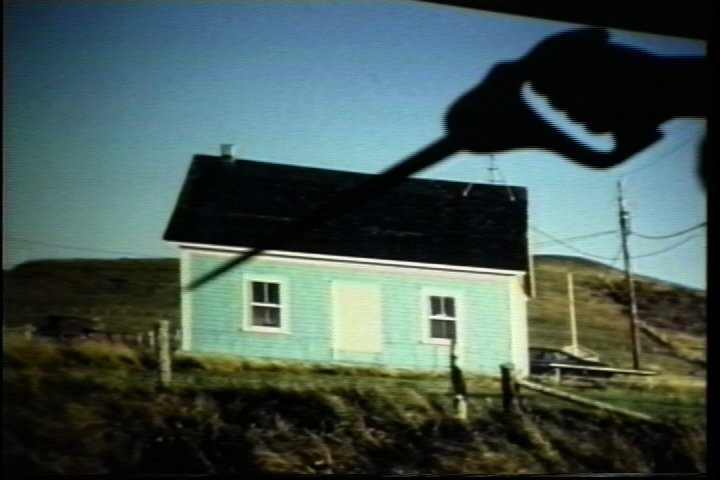There; Done.
2000, USA / 16mm & S8 / 17 minutes
Camera: Rebecca Baron, Baba Hillman
Additional camera: Adele Horne, Rian Brown
Cast: Boris Czigany, Baba Hillman, Phoebe Landrum-Schaub, Wendell Kling, Lisa Groth, Rachel Mayeri, Laura Nix, Yumiko Tokuyama, Andrew West



An elliptical travelogue in six languages merging fantasy, cartoon, legend and dream. Arriving at each new country the traveler finds a past she did not know she had. Landscape and identity are in constant transformation as she assumes the roles of spy, praying mantis, demolition expert and thief in a feminist, anarchistic exploration of mythologies of the odyssey and the home. Shot in the Anza Borrego desert and the town of Jacumba. The text underscores danced explorations of passage – images of spinning, falling, landing on ledges, bridges, gardens, and roads. The singing of these transitions plays with phrasing, pitch, inflection, and rhythm of the voice partnered by speed, dynamism, counterweight and geometry of the body within the frame. It begins an exploration in scoring movement to language to image.
The changing of language changes the shapes that the tongue takes – the rhythm of the gait, the weight of the limbs, the rhythm of the breath. When we speak another language we enter another body. The perception of a wall of words, a code impossible to access, is most palpable for the immigrant to a new country. The initial inaccessibility of a new language and code of behavior offers a possibility of discovery and transformation. In this piece, text that is heard in one language is often repeated later in another language – a further exploration of the different processes involved in the derivation of meaning. There is no native language or subtitle, and the road sign might as easily be in Japanese as in Italian. Each language acts as a different skin or envelope: depending on the viewer, a particular language may interact with image as an element of pure sound.
Un récit de voyage elliptique en six langues mêlant fantasie, dessin animé, légende et rêve. En arrivant dans chaque nouveau pays, la voyageuse découvre un passé qu’elle ignorait avoir. Le paysage et l’identité sont en constante transformation alors qu’elle assume les rôles d’espion, de mante religieuse, d’expert en démolition et de voleuse dans une exploration féministe et anarchique des mythologies de l’odyssée et de la maison. Tourné dans le désert d’Anza Borrego et dans la ville de Jacumba. Le texte souligne les explorations dansées du passage – des images de tourbillon, de chute, d’atterrissage sur des rebords, des ponts, des jardins et des routes. Le chant de ces transitions joue avec le l’inflexion et le rythme de la voix – avec la vitesse, le dynamisme, le contrepoids et à la géométrie du corps dans le cadre. Cela commence une exploration musicale, du mouvement au langage et à l’image.
Le changement de langage change les formes que prend la langue – le rythme de la marche, le poids des jambes, le rythme du souffle. Quand on parle une autre langue, on entre dans un autre corps. La perception d’un mur de mots, d’un code impossible d’accès, est fort chez l’immigrée dans un nouveau pays. L’inaccessibilité d’un nouveau langage et d’un nouveau code de comportement offre une possibilité de découverte et de transformation. Dans cette pièce, le texte entendu dans une langue est souvent répété plus tard dans une autre langue – une exploration plus approfondie des différents processus impliqués dans la dérivation du sens. Il n’y a pas de langue maternelle ni de sous-titre, et le panneau routier pourrait aussi bien être en japonais qu’en italien. Chaque langage agit comme une peau ou une enveloppe différente : selon le spectateur, un langage particulier peut interagir avec l’image comme un élément du son pur.